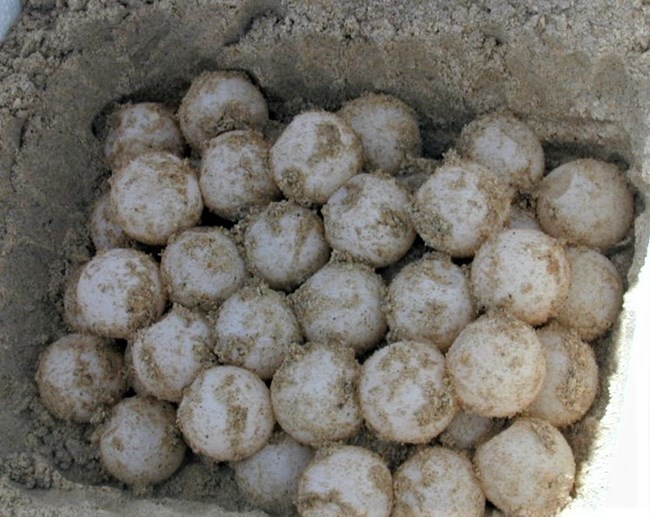
NPS Photo. The international program to restore and enhance the Kemp’s ridley sea turtle population and establish a secondary nesting colony at Padre Island National Seashore began in 1978 (Shaver 1987, Shaver and Calliouet 2015). Sea turtle eggs collected in Rancho Nuevo, Mexico, were packed in Padre Island sand in expanded polystyrene foam (e.g., Styrofoam) boxes and shipped to the incubation facility at Padre Island National Seashore. Incubating sea turtle eggs in foam boxes typically produced clutches with more male embryos. The implications of such a phenomenon are profound in a project designed to increase the numbers of endangered species, therefore, a study was undertaken to determine the ideal incubation temperature to produce clutches that were predominately female (Shaver et al. 1988, Shaver and Calliouet, 2015). Researchers at the park found that Kemp’s ridleys possess a pattern of sex determination in which cooler temperatures produce more males and warmer temperatures produce more females (Shaver et al. 1988). Probes were placed with incubating eggs to record temperatures and methods were used to attempt to increase temperatures at the incubation facility. The data suggest that the temperature range that produces a mixed sex ratio extends from approximately 29 to 32.5°C (Shaver et al. 1988, Shaver 1989, 2005, LeBlanc 2012). The results provide a basis for predicting Kemp’s ridley sex ratios based on incubation temperatures. These findings could provide a method for accurately estimating sex ratios produced in the Kemp’s Ridley Recovery Program at Rancho Nuevo and in Texas, in order to help manage the recovery of this species. Literature Cited:Bevan, E.M., T. Wibbels, D.J. Shaver, J.S. Walker, F. Illescas, J. Montano, J. Ortiz, J.J. Pena, L. Sarti, B.M.Z. Najera, and P. Burchfield. 2019. Comparison of beach temperatures in the nesting range of the Kemp’s ridley sea turtle in the Gulf of Mexico, Mexico and USA. Endangered Species Research 40:31–40. |
Last updated: December 3, 2020
